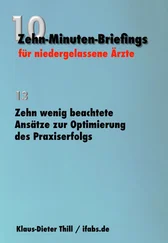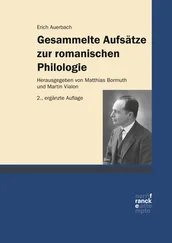I begin by adducing a characteristic passage from Bernard of Clairvaux’Bernhard v. Clairvaux SermonsDrama. At this point he refers nigra only to tabernaculum Cedar , formosa only to pelles Salomonis , and he thus begins the exposition of this second comparison:
Quid est ergo quod dicit: formosa sum sicut pelles Salomonis? Magnum et mirabile quiddam, ut ego aestimo: sed tamen non hunc, sed illum attendamus de quo dicitur: Ecce plus quam Salomo hic (Matth.Matthäus (Evangelist) 12, 42). Nam usque adeo is meus Salomon est, ut non modo pacificus (quod quidem Salomon interpretatur), sed et pax ipsa vocatur, Paulo perhibente quia ipse est pax nostra [Ephes. 2, 14]. Apud istum Salomonem non dubito posse inveniri, quod decori sponsae omnino comparare non dubitem. Et praesertim de pellibus eius adverte in Psalmo: Extendens, ait, coelum sicut pellem [Ps. 103, 2]. Non ille profecto Salomon, etsi multum sapiens, multumque potens, extendit coelum sicut pellem; sed is potius, qui non tam sapiens quam ipsa Sapientia est, ipse prorsus extendit et condidit. Istius siquidem, et non illius illa vox est: Quando praeparabat coelos , haud dubium quin Deus Pater, et ego aderam [Prov. 8, 27]. … Pulcherrima pellis, quae in modum magni cuiusdam tentorii universam operiens faciem terrae, solis, lunae atque stellarum varietate tam spectabili humanos oblectat aspectus. Quid hac pelle formosius? Quod ornatius coelo? Minime tamen vel ipsum ullatenus conferendum gloriae et decori sponsae, eo ipso succumbens, quod praeterit et haec figura ipsius, utpote corporea, et corporeis subjacens sensibus … [Then follows the interpretation of pellis not as coelum visibile et corporeum, but as coelum intellectuale et spirituale]. Patr. Lat ., CLXXXIII, 913–914.
Solomon thus becomes a type of Christ, and pelles , by combination with extendit coelum sicut pellem , becomes heaven.33 Spontaneously the idea presents itself: perhaps DanteDante really meant pellis as heaven, so that the passage would have to be interpreted: therefore heaven becomes obscured – a thing which has just happened, shortly before, during Peter’s speech, in the same canto ? It is not impossible that DanteDante had such an idea in mind; but the tradition offers still other less complex interpretations of Cant. 1, 4–5.34 Gregory writes in his Expositio super Cantica ( ibid. , LXXIX, 486):
… Quomodo formosa sicut pelles Salomonis? Fertur Salomo quando templum aedificavit omnia illa vasa templi factis pellibus cooperuisse. Sed nimirum pelles Salomonis decorae esse potuerunt in obsequium regis. Sed quia Salomon interpretatur pacificus, nos ipsum verum Salomonem intelligamus; quia omnes animae adhaerentes Deo pelles Salomonis sunt. …
He thus regards pelles as the souls of the faithful; and Honorius of AutunHonorius v. Autun, with a reference to the arca Dei posita in medio pellium (2 Sam. 7, 2), explains pelles as ecclesia ( ibid ., CLXXII, 368). Even by the detour coelum we may return to ecclesia , as is shown by a text of Adam ScotusAdam Scotus which I wish to quote also because it demonstrates the relation of figural speculations on pellis and decoloratio with political themes familiar and important to DanteDante. In Sermo XXX in die S. Stephani Protomartyris, describing Stephan’s vision of Heaven while being stoned, he refers to the passage extendit coelum sicut pellem and gives a sevenfold explanation of coelum : the first is Sancta Ecclesia: Nonne tibi videtur sancta Ecclesia esse coelum, in qua velut sol fulget sacerdotium, ut luna lucet, regnum et quot sanctos viros quasi tot praeclaras habet stellas ? But these heavenly lights are already darkened, the corruption has begun, a fact which he corroborates by many scriptural passages, above all Joel 2, 31: Sol convertetur in tenebras, et luna in sanguinem. Afterwards sol and luna are discussed separately; a great number of themes appear which DanteDante used later in the same context, for ex. the dragon’s tail (Apoc. 12, 4; Purg. 32, 130–135 ). Finally he quotes Apoc. 6, 12–13:
sol factus est niger tamquam saccus cilicinus, et luna tota facta est sicut sanguis, et stellae ceciderunt super terram: pro eo quod sacerdotium asperitas iniquitatis denigrat, imperium furor crudelitatis cruentat, alii vero sancti relicta altitudine contemplationis coelestis devolvuntur in terrenis. … ( Patr. Lat., CXCIII, 272).
The denigratio of the Sacerdotium leads us back to the decoloratio in Cant. 1, 4–5. Most of the explanations given by mediaeval commentators are not suitable for our purpose; they consider it mostly either as an effect of the persecution (the Church is ‘black’ because she is persecuted by the evil powers of the world,35 but pure, white, beautiful36 within because of her virtues) – or as an effect of the burning grace of Christ. But only discoloration through moral corruption would suit our purpose; this is suggested by some passages of Gregory and of Honorius;37 one may also quote Bernard’s words concerning Sir. 13, 1 ( qui tangit picem etc., ibid., CLXXXIII, 1178).
None of the explanations of Cant. 1, 4–5 which I know is altogether suitable for our DanteDante passage; but that could not be otherwise. For DanteDante’s sequence of ideas is his peculiar property; no other, before him, would have said that the corruption of the Church in his time had led to a darkening of heaven comparable to that following the Passion of Christ; or that the sviare of human society was due to the lack of imperial power; these ideas were his own, and so he had to use the motifs figlia , pelle , decolorare as they suited his purpose. Thus, he gave a variant or new combination of the traditional interpretations: human society ( sponsa Christi , la bella figlia ) loses her colour in the sight of the bridegroom (in the sight of Christ, nel primo aspetto ),38 or even, if my conjecture concerning the syntactical structure is correct, nel primo aspetto di quel ch’apporta mane e lascia sera – just as in his sight, ne la presenza del Figliuol di Dio (v. 24), the throne of Peter is vacant. It is not very important whether one understands pellis as coelum, or simply as an image of the Church or Christianity used by the sponsa of the Canticles as a comparison with herself. The interpretation resulting from our observations is not new; many scholars have been convinced that the corruption of the Church or of Christianity was meant. It is, however, not our principal purpose to give new interpretations, but to contribute to the understanding of the poetical and symbolical world in which DanteDante lived.
In the verses of the prayerLobrede to Mary ( Par. 33)
Qui sei per noi meridiana face
di caritade; e giuso, intra i mortali
sei di speranza fontana vivace
DanteDante uses the images meridiana face and fontana for the contrast ‘here in heaven’ and ’down on earth’. It is Bernard of Clairvaux whom DanteDante makes speak thus, and the same images are to be found, in the same contrast, in Bernard’s above-quoted sermon de aquaeductu ( In Nativ. B. Mariae Virg. Sermo , § 2–4, Patr. Lat ., CLXXXIII, 439–440); however they there refer not to Mary, but to Christ.
In Bernard’s sermon Christ is fons indeficiens , fons hortorum , fons vitae , but Mary is the aqueduct which leads the water to us:
… Descendit per aquaeductum vena illa coelestis, non tamen fontis exhibens copiam, sed stillicidia gratiae arentibus cordibus nostris infundens, aliis quidem plus, aliis minus. Plenus equidem aquaeductus, ut accipiant caeteri de plenitudine, sed non plenitudinem ipsam. Advertistis iam, ni fallor, quem velim dicere aquaeductum, qui plenitudinem fontis ipsius de corde Patris excipiens, nobis edidit ilium, si non prout est, saltem prout capere poteramus. Nostis enim cui dictum est: Ave gratia plena. …
Читать дальше












